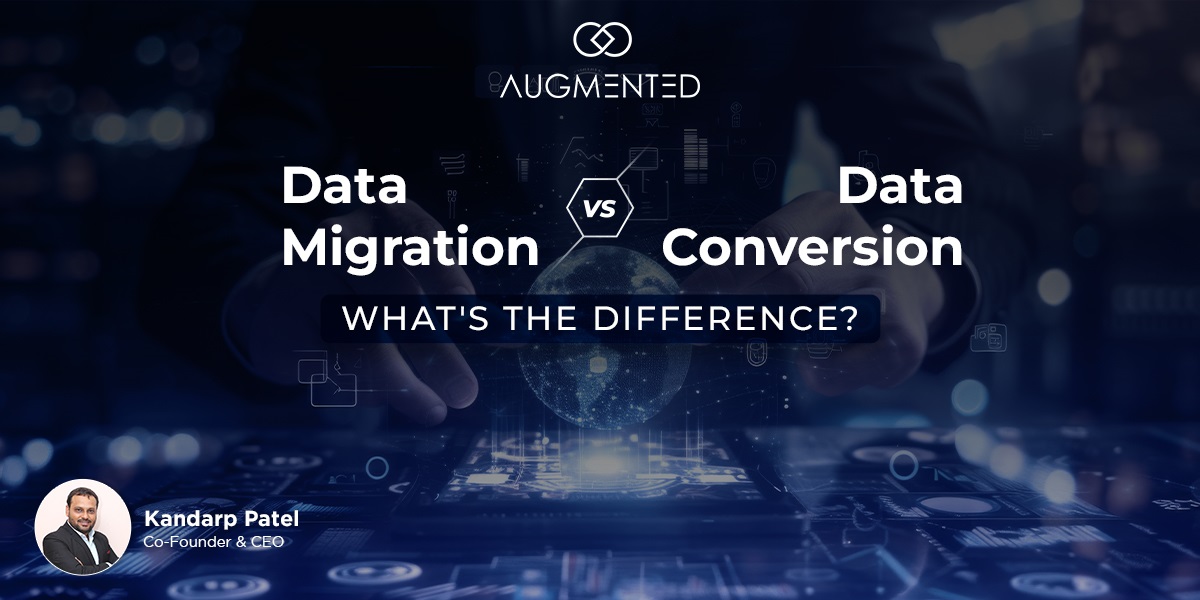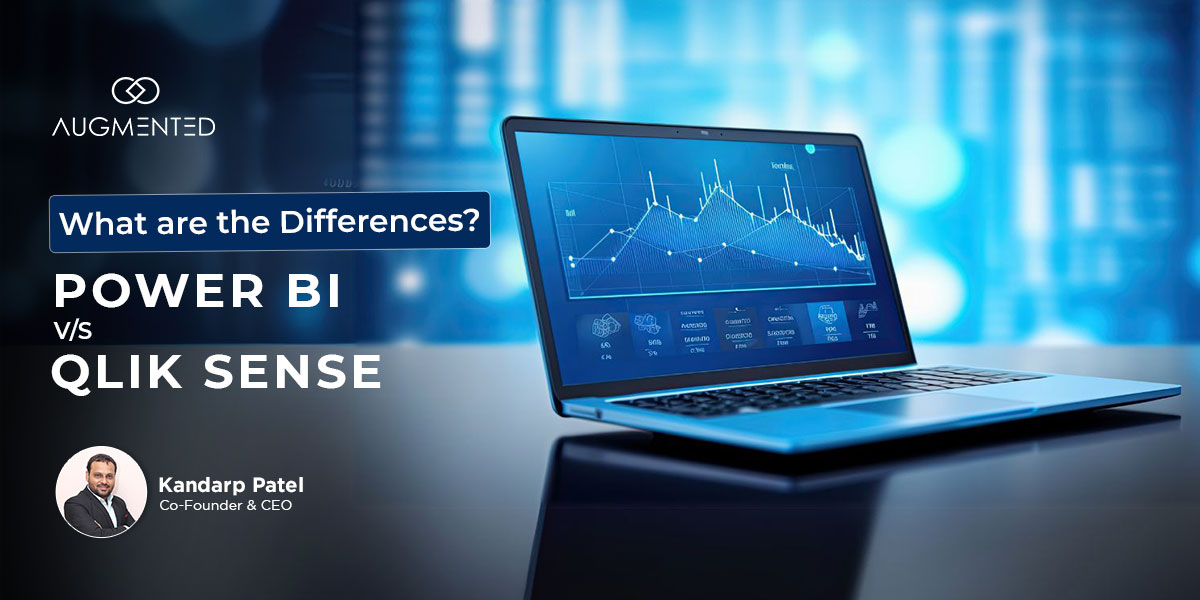Ever happened that your system upgrade didn't go as effortlessly as planned? Do data projects and system upgrades face setbacks?
More often than you may think!
Mismanagement of data projects can destroy your project before you even begin.
But what could be the reason?
One common source of misunderstanding often arises when you are grappling with the difference between data migration and data conversion.
If you want seamless transitions, consider working with professional data migration services to avoid common pitfalls.
Don't worry! We'll break it down for you.
Ready to avoid pitfalls and make the right data management decisions? Dig into the blog to understand data migration vs data conversion.
Data Migration: Benefits and Challenges
Data migration is a process of yielding, diversifying and optimizing your company’s digital landscape. It’s like your data virtually packing its suitcase to move from one system to another.
You can also think of it as moving houses: moving from one legacy system to a new and updated system, such as the cloud.
How? You can do so by seamlessly migrating your vast amount of data from one system to another.
Why? Businesses and organizations often go through a data migration process for the following reasons.
- Currently have an outdated or legacy system
- To move their data to the cloud
- To consolidate data on a unified platform
- Adhering to the new regulations and legal changes
- Better optimization of the system
- For cost-effective solutions
- Making data accessible to other applications
- Poor security leading to cyber threats
- To keep up with the latest technological trends
- Website consolidation
- Datacenter relocations
Similar to moving house, migrating data from one place to another also has its benefits and data migration problems. Want to know more? Read ahead.
Benefits and Challenges
Data migration is a blessing, especially with the ever-growing data. (Over the next five years, the global data is anticipated to grow by over 180 zettabytes.) However, it comes with its own set of hurdles. Surprisingly, 83% of data migration projects either fail or surpass the budget.
A data migration process can make or break your business. It can either mess up your entire new system or take your business to new heights.
Benefits of Data Migration
- Streamlined operations
- Better data insights
- A unified platform for all your data
- Better integration
- Enhanced security
- Improve system performance
- Enhanced data accessibility and flexibility
- Business scalability
- Digital transformations
- Cost-effective in the future
- Better compliance handling
Challenges of Data Migration
- Risk of data loss and corruption
- Long system downtime
- Risk of data corruption
- Compatibility issues between legacy and new system
- High cost of migration, planning and execution
- Unforeseen technical issues
- Resistance to adaption from employees
- Finding an expert
- Failing to integrate the process with existing processes
- Lacking data protection measures
- Unorganized data
- Data governance
- Prolonged data mapping
The benefits of data migration are many but pitfalls are also a part and parcel of the migration process.
Data Conversion: Benefits and Challenges
Data conversion is the process of standardizing data by transforming it from one format, system or language to another. Think of it as repacking your bags depending on your destination.
Data conversion is digitally “translating language” from English to Fresh, with the same information for the new system to understand.
Every data conversion process is unique and depends on the individual processes.
Say you are switching to a new CRM (customer relationship management software). Then, you will have to convert your spreadsheet data into a format accepted by the CRM.
Moreover, data conversion processes can be simple or intricate, depending on the amount of data, its complexity, and your project needs.
Data conversion does bring better efficiency and integration with your new systems, similar to things perfectly fitting into your new space. But what about the things that don't fit into your new house as expected?
Benefits and Challenges
This “packing and repacking” of data is crucial for every business. Leveraging data conversion enhances your business efficiencies, but not without the challenges.
What benefits and challenges should you consider? Let’s have a look.
Benefits of Data Conversion
- Reduced data redundancies
- Improved data quality
- Better data management
- Improved data visualization
- Enhance user access
- Faster query execution
- Expedite data processes
- Improved data collaboration and sharing
- Reduced risks of non-compliance
- Precise and swift data analysis
- Actionable insights
Challenges of Data Conversion
- Data loss during conversion
- Misinterupped data
- Complexity in data mapping and transformation
- Data integrity issues
- Compatibility issue between converted data and target system
- Tight timelines
- Budget constraints
Data conversion processes are essential if you want to optimize your data, make data-driven decisions and increase your bottom line. However, strategic planning is necessary to overcome the intricacies of data conversion.
Data Migration vs Data Conversion: The Key Differentiation
Corrupt files, lost information, failed system integration and a massive business setback—there is a lot to lose when it comes to data migration and data conversion processes.
So, put on your data goggles and step right into understanding data migration vs data conversion.
1. Primary Purpose of the Process
The main purpose of data migration services is to move data from one place to another without modifying the actual data. For example, you move customer information and sales data from a legacy system to a new CRM system on the cloud.
The main goal of data conversion services is to change the format or structure of your data so that the new system can operate accordingly. For example, converting an RTF file to a Word file.
2. Scope of the Process
The process of data migration usually has a broader scope as it involves moving massive amounts of data. For instance, you might move your entire database or system, from product catalogs and order histories to customer data and sales records to a new ERP platform.
Data conversion services, on the other hand, take a more targeted approach, transforming only specific data to ensure it fits seamlessly into the new system. If you are integrating your financing data into an Australian system, for example, you will need to change US dollars into AUS dollars.
3. Associated Risks
Risks associated with data migration usually revolve around the integrity and security of your data. If incorrectly implemented, data migration may lead:
- Data corruptions
- Data loss
- Downtime
- Incomplete transfer
- Disrupted business (and much more.)
Data conversion services incorporate risks associated with how correct or incorrect your data is for the new system. Incorrectly converted data may lead to:
- Misinformation
- Losing crucial information
- Misinterpretation
- Failed conversions
- Disrupted business processes (and much more.)
Take, for example, in a failed data migration, you might risk your entire customer information, while in a failed data conversion, you might risk losing money due to incorrect currency conversions.
4. Top 5 Tools 2024
Whether you are migrating to the cloud or converting your data, having the right tools can entirely turn the game of your project. So, to help you make a better tool selection here are the top five data migration and conversion tools.
Data Migration:
- Fivetran
- AWS Migration Services
- Matillion
- Apache NiFi
- Microsoft
Data Conversion:
- AWS Database Migration
- IBM
- Talend
- SQL Server Integration Services
- Oracle Data Integrator
To unlock the complete potential of your data, choose a tool that best suits your business and data needs.
5. Testing Strategies
Lost data, incorrect information and compliance issues are common headaches when it comes to data migration or conversion. One wrong step can jeopardize your entire project.
Amongst the various steps involved in the process of data migration and data conversion, testing comes as a very important one.
Therefore, incorporating data migration and data conversion testing strategy into your processes ensures a successful project without compromising your data or business.
Side-By-Side Comparison: Data Migration vs Data Conversion
Still on the fence? Here is a tabular difference between data migration and data conversion.
While data migration and conversion are usually confused as the same thing, there is a lot of difference between them. Even though they both involve moving data, their purpose, role and outcome are distinct.
Make the Right Data Decision
Are you considering migrating your data or transforming it? Remember to first clear all your dilemmas, as one tiny glitch can lead to a domino of errors.
If you have any confusion, contact our experts at Augmented Systems today. We offer tailored data migration services for all your specific business needs.
FAQs:
1. What is the difference between data migration and data conversion?
Data conversion simply means transforming your data from one format to another, whereas data migration means transferring your data from one place or system to another.
2. What is data migration?
Data Migration is the process of moving or migrating data from one location to another, such as from a legacy system to a new system (the cloud.)
3. What do you mean by data conversion?
Data conversion is the process of transforming your legacy data from one format to another so that it is compatible with the new or targeted system, application or software.
4. What is the scope of data conversion?
To effectively scope a data conversion project
- Define objectives,
- Identify data sources,
- Determine conversion methods,
- Establish timelines,
- Allocate resources,
- Consider dependencies,
- Assess risks,
- Engage stakeholders, and
- Outline deliverables
These steps will help ensure clarity and alignment with the project goals and requirements.
5. What is the key purpose of data migration?
The primary purpose of data migration is to consolidate data from various formats into a single unified platform.





